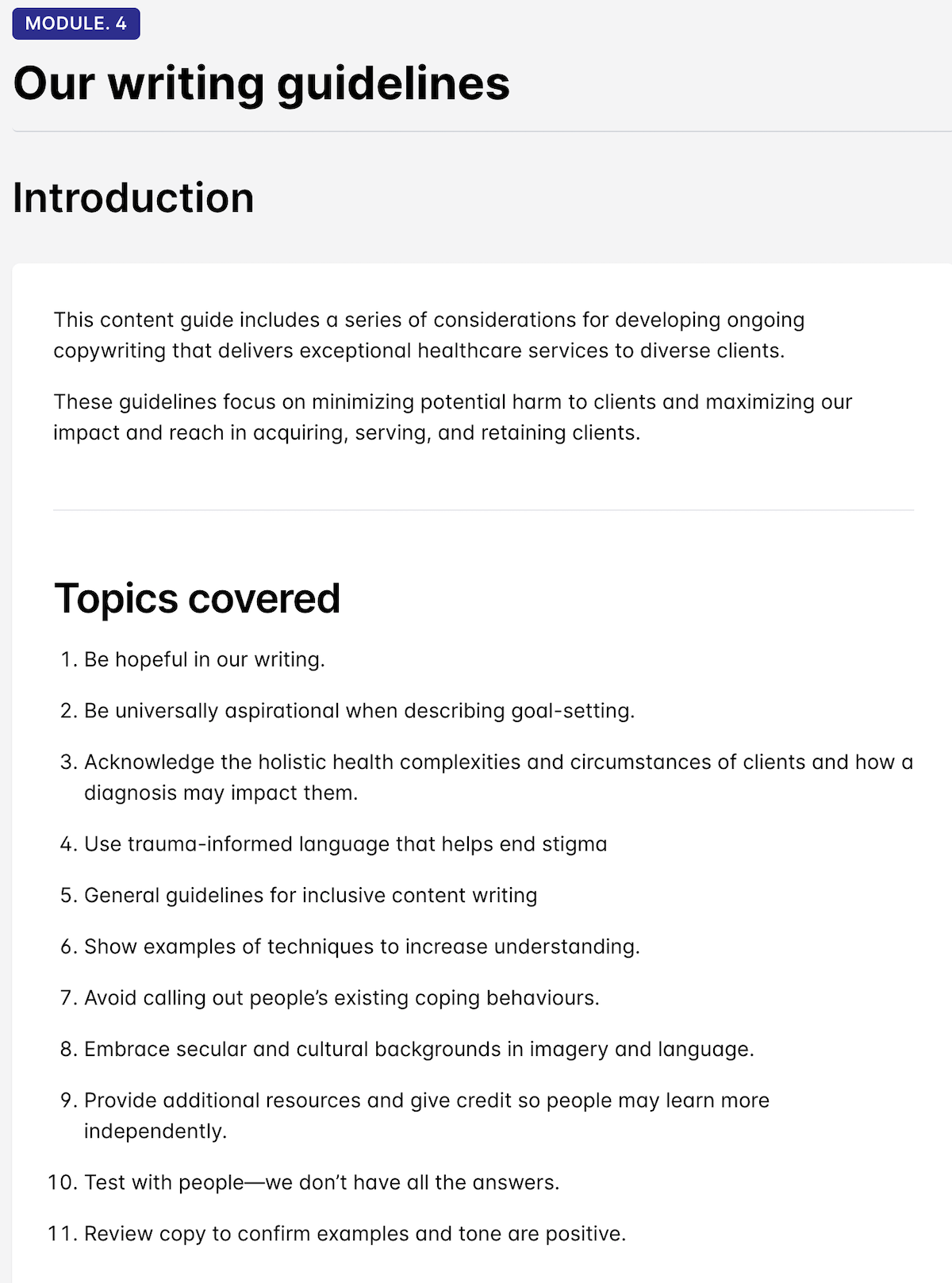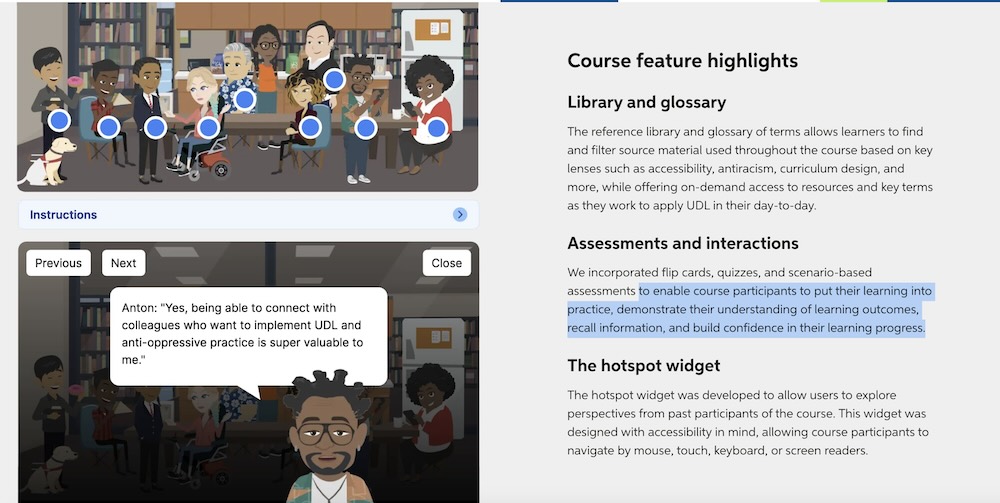An effective Learning and Development strategy is an essential part of any successful business’s toolkit. Today, as organizations weather market volatility, an increasingly competitive job market, technological shifts, and other challenges, it’s become a key differentiator.
With an estimated 50% of employees requiring reskilling by 2025, businesses that offer training and upskilling opportunities own a significant competitive advantage.
In this environment, the digital transformation of employee training through eLearning is a game changer. From onboarding to reskilling, online learning saves companies time and money, and has the potential to revolutionize the way we work and learn.
Effective and scalable eLearning gives your workforce the skills and capacity to adapt, innovate, and drive business growth to meet the challenges and opportunities of evolving global trends. However, unlocking the transformational aspects of going digital requires a shift of mindset. It starts with understanding key aspects unique to the digital learning experience.
Maximizing eLearning ROI and performance
Your company can optimize and boost its eLearning ROI through these three strategies:
Diversity, equity, and inclusion (DEI)
Effective eLearning incorporates principles of DEI by creating a sense of belonging for all course participants and helping them connect more deeply to the learning content. This not only improves the quality and effectiveness of employee training programs but can have a significant impact across your business.
Advantages of integrating DEI into your training program
- Increased profits. Companies without a DEI strategy or with an ineffective one are 27% less likely to be profitable compared to their peers. Bringing this practice to your training programs helps set the tone across your organization.
- Employee retention. Creating workplace environments that value the unique perspectives of employees reduces turnover. Demonstrating that you value your diverse employees through your training program content helps set this standard for every employee.
- Greater and more inspired innovation. Employees are more likely to innovate when they are empowered to bring their own ideas and worldviews to their work. Delivering improved, more inclusive training helps every employee grow their capacity and capability to innovate.
When inclusion flourishes, it permeates the whole work environment. It enables everyone to succeed, and it leaves no one out. It has a positive impact on people’s desire to work for an organization and how productive they are, the quality of decision making, customer relations, innovation, revenues, and reputations. ~ Rebekah Steele, INdivisible, 2020
How to leverage DEI to enrich your corporate learning programs
Championing DEI in learning involves engaging learners on a deeper level, for example, by:
- encouraging employees to bring their rich perspectives and realities to their learning experiences
- empowering employees to broaden their perspectives and innovate solutions for diverse markets
- exploring creative ways to promote DEI in organizational processes and practices
To achieve these objectives, digital learning programs can be made more accessible and inclusive through the following tactics.

- Ensure the stock images, videos, and illustrations used in a course reflect the diverse identities, backgrounds, and roles in your company.
- Use simple, clear, and inclusive language that everyone can easily understand and relate to. We recommend creating a company-wide inclusive writing framework that can be customized for each department.
- Incorporate video translations to serve a multilingual market. For Canadian organizations, consider French, American Sign Language (ASL), and Langue des Signes Quebecoise (LSQ). US organizations may prioritize Spanish and ASL.
- Give learners agency by providing a balanced mix of audio, text, images, and videos.
- Evaluate content for bias and preconceived assumptions about the employees and any other course participants. Are there options for flexibility in the learning program? Do all employees have access to resources and requirements to take the course?
Put learners at the centre of your training programs and watch them flourish.
User experience (UX) and accessibility
Today’s employees have high expectations of their online experiences and interfaces, and that includes your eLearning offerings. Leveraging the convenience and flexibility of eLearning requires expertise in designing a user experience that helps ensure employees can retain and connect new knowledge to their work.
Complicated learning software features, unfamiliar navigation controls, and disorganized course interfaces and content structure on learning management systems (LMSs) can make content inaccessible and difficult to understand.
Drawbacks of poor UX design
- Low learning engagement. Learners disengage when navigating poorly designed interfaces.
- Poor knowledge retention. Employees can’t assess their knowledge and retain information if the course interface and structure are not accessible, organized, and responsive.
How to enhance UX and accessibility to maximize eLearning ROI

- Ensure consistency in content flow, navigation controls, and design elements. (Leading with people-centred design allowed us to build a flexible and accessible eLearning program for George Brown College that is now being used across Ontario higher education institutions.)
- Make the course more flexible by providing access via multiple screen sizes and devices. It’s helpful to adapt the course to fit the needs of employees who prefer to learn on their smartphones and mobile devices.
- Tailor the interactions and activities to give choice and agency to the learners. For instance, you may want to incorporate features such as resource aids, personalized reflection activities, and scenario-based assessments to enable course participants to put their learning into practice.
- Deliver similar content in multiple formats—from text to images, quotes, and videos—to improve accessibility and enable participants to engage with content in more than one way and support the diverse learning preferences of each of your learners.
Digital instructional design principles
Instructional design is different from UX design in eLearning, although they work hand in hand. Instructional design focuses on how people learn and how to transform subject matter content into a learning product. UX design then leverages instructional design to ensure the course material translates seamlessly on an LMS platform and is usable, scalable, effective, and accessible to all course participants.
Business impacts of incorporating instructional design principles into corporate training
Implementing instructional design principles in your training programs benefits your employees and organization, improving eLearning ROI in the following ways:
- Enhanced productivity and engagement. From onboarding to reskilling, effective learning programs empower people with the skills to become more effective at their jobs, which leads to increased efficiency and productivity.
- Improved retention. A 2023 Work Institute report analyzing employee retention complexities shows that professional development is a leading reason people resign. Learner-centred training programs help address this by opening up ways for employees to add value and impact to the business while pursuing self-improvement.
- Saved costs. It costs more to hire new employees than to train and reskill existing ones. Improving retention through people-focused professional development programs will save you time and money while adding to your bottom line.
Investing in learning helps establish a critical competitive advantage—and eLearning designed with a focus on DEI, UX, and instructional design will give your organization a chance to realize this advantage in terms of hiring, employee retention, and performance.
Start the discussion about eLearning ROI with your learning and training team by asking the following questions:
- Is there more we could be doing to make our eLearning programs inclusive, accessible, and effective for all employees?
- Are we creating opportunities for learners to apply new knowledge and skills in their work?
- How are we leveraging the latest eLearning practices to improve retention and productivity?
Interested in learning more about how to maximize the impacts of your digital learning and training programs?
We’d love to chat. Our multidisciplinary team at Say Yeah specializes in delivering holistic and customized corporate eLearning solutions that help organizations turn training into a competitive advantage.